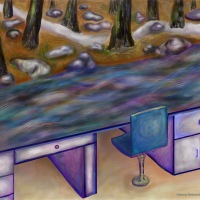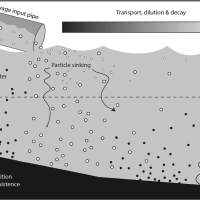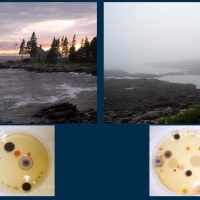Climate Change and Biodiversity: Steering the Course to a Sustainable Future
Climate change: it's not just about sweltering summers, milder winters, or the receding ice caps. Its implications stretch far beyond these weather changes, impacting the intricate network of life that covers our planet. One area that often doesn't get the attention it deserves is biodiversity—the vast spectrum of life forms on Earth.
Climate change stealthily disrupts this array of life, making it crucial for us all—from everyday global citizens to scientists and policymakers—to understand its impacts on biodiversity.
In this insightful exploration, we're going to present this less-talked-about side of climate change. We will unravel the complicated interplay between climate change and biodiversity, dive deep into the specific effects, look at future predictions from scientific research, and explore potential mitigation strategies. Remember, "knowledge is power," and by fully understanding these crucial issues, we arm ourselves with the resources to effect meaningful change.
You might not be researching for a paper on the topic, but staying informed is a crucial step in addressing the climate change challenge. So, strap in and join us on this enlightening journey through the ways in which our planet's diverse lifeforms are affected by the changing climate.
Decoding Biodiversity: The Earth's Invaluable Living Tapestry
Before we delve into the depths, let's familiarize ourselves with the term 'biodiversity'. An abbreviation for 'biological diversity,' biodiversity embodies the remarkable spectrum of life inhabiting our planet. It paints a picture that includes everything from the tiniest soil microorganisms to the awe-inspiring elephants gracing the savannahs, their intricate interactions, and the complex ecosystems they form.
However, the concept of biodiversity extends beyond just the number of species. It envelops the genetic diversity within each species and the diverse ecosystems, habitats, and ecological processes that maintain life on Earth. Imagine biodiversity as Earth's expansive, living encyclopedia, where each species is a distinct chapter of evolutionary history and potential.
This splendid tapestry of life holds immense value for our planet and humanity. It forms the backbone of ecosystem services—providing us with clean air, pure water, fertile soil, pollination, and climate regulation—fundamental for our survival and well-being. By understanding the significance of biodiversity, we can better appreciate the potential consequences of climate change on this vital aspect of our planet.
Deciphering the Environmental Dilemma: Climate Change - Biodiversity's Silent Adversary
To appreciate the monumental effect of climate change on biodiversity, we must first demystify the concept of the much-talked-about phenomenon, along with the various factors advancing it. Often misunderstood, climate change encapsulates long-lasting and substantial transformations in global climatic variables, such as significant shifts in temperature averages and weather cycles.
Not all these shifts can be attributed to Earth's natural climatic rhythm. In fact, the unusually abrupt and intense changes widespread today are a direct result of human activities, particularly since the onset of the Industrial Revolution. This era marked a skyrocketing dependence on fossil fuels like coal, oil, and natural gas to fulfill escalating energy needs. The combustion process involved in energy generation releases enormous quantities of carbon dioxide and other greenhouse gases into our atmosphere.
These gases, especially carbon dioxide, function as a thermal trap, absorbing and retaining solar heat. The outcome is an overall increase in Earth's average temperature, a process more commonly recognized as global warming. This temperature surge, however, is not uniform across the globe. It results in diverse repercussions, including the accelerated melting of polar ice, elevated sea levels, a spike in extreme weather incidents, and disturbances in delicate ecosystems.
Such drastic changes create a compelling backdrop to investigate the far-reaching implications of climate change on global biodiversity. As we delve deeper, the need for understanding and addressing this covert yet formidable threat becomes increasingly evident.
The Climate-Biodiversity Nexus: An Intricate Dance of Life
Let's take a moment to explore the vital bond between Earth's climate and biodiversity, two elements that maintain our planet's delicate equilibrium. This bond resembles a complex orchestra, where every species represents a distinct instrument, contributing to the overall harmony—our ecosystem balance. Imagine climate change as an unexpected, off-key note, sending a cascade of disruptive tones through our natural symphony.
- Climate change directly affects biodiversity by altering species’ habitats. This can lead to extreme environmental conditions, potentially causing displacement or even extinction. Polar bears, relying on sea ice for survival, are a glaring example as their homes melt away due to rising Arctic temperatures.
- Beyond the direct influences, climate change indirectly intensifies human-induced threats to biodiversity, such as habitat destruction, pollution, and overexploitation. This disruption can skew biological events like migration and reproduction, creating mismatches between species and their habitats or disrupting predator-prey dynamics.
- The response to climate change varies among species, resulting in changes in species distribution and modifications to ecosystem structures. While some species might thrive under new conditions, this often occurs at the cost of others, causing a net decrease in biodiversity.
Understanding the complex interplay between climate change and biodiversity is pivotal, as biodiversity mirrors more than life's abundance—it reflects our planet's health. The more we know about this intricate relationship, the better equipped we'll be to protect our world's invaluable biodiversity. Let's deepen our knowledge of this critical nexus and prepare to defend Earth's diverse life forms.
Zooming into the Biodiversity Kaleidoscope: Detailed Impacts of Climate Change
Having established the essential nexus between climate change and biodiversity, let's narrow our lens and explore the specific consequences climate change has on biodiversity.
- Vanishing Acts: Species Extinction
Potentially the most devastating impact is the threat of species extinction. The International Union for Conservation of Nature (IUCN) recognizes climate change as a mounting menace to species globally. A poignant example is the Bramble Cay melomys, an Australian rodent, declared extinct in 2016, primarily due to its island habitat being engulfed by rising sea levels.
- Disappearing Homes: Habitat Loss and Fragmentation
Climate change provokes habitat loss by morphing ecosystems. Coral reefs, for example, shelter a quarter of all marine species but are incredibly susceptible to ocean acidification and warming. The Great Barrier Reef has lost half of its coral cover over recent decades. Concurrently, escalating temperatures and fluctuating rainfall contribute to desertification, shrinking habitats for species that inhabit grassland ecosystems.
- Relocating Residents: Shifts in Species Distribution
As climates alter, species migrate towards cooler regions, like higher latitudes or elevations, prompting shifts in species distribution. The Edith's checkerspot butterfly in North America, for instance, has been moving its range northwards and to loftier altitudes due to increasing warmth and dryness in its southern range.
- Out-of-Sync Nature: Phenological Mismatches
Phenology—the timing of natural events—is being significantly disrupted by climate change. Earlier springs may prompt plants to leaf and bloom prematurely, causing disconnects between plants and pollinators. Similarly, migratory birds arriving after their food sources peak can face reduced survival rates.
- Unwelcome Visitors: Increased Disease and Pest Outbreaks
Rising temperatures can boost pest and disease prevalence. The mountain pine beetle, ordinarily checked by frosty winters, has decimated North American pine forests because of milder winters.
Recently, a research proposal writing service masterfully detailed these impacts in an all-encompassing study, underlining the pressing need for robust strategies to alleviate the effects of climate change on biodiversity.
It's vital to remember these impacts don't occur in isolation; they interact and magnify each other, potentially causing a domino effect on biodiversity. Acknowledging these particular impacts is our first step in grasping the enormity of our challenge and initiating apt action to protect Earth's biodiversity.
Peering into Tomorrow: Unveiling Research Projections on Biodiversity and Climate Change
As we gaze into the future, the fate of biodiversity in our evolving climate remains uncertain. This is due to the intricate nature of ecosystems, but current research paints a troubling picture unless we mobilize swiftly.
A significant study brought forth by a respected research proposal writing service, supported by esteemed climate scientists, offers projections for the forthcoming decades. The research suggests that if we persist in spewing greenhouse gases unchecked, up to a third of plant and animal species could be on the brink of extinction by 2070. Furthermore, shifts in temperature and rainfall patterns hold the potential to drastically transform global ecosystems, spanning from the polar ice caps and forests to deserts and coral reefs.
However, the research holds a silver lining—it reveals that we have the power to modify this trajectory considerably. We can achieve this by curtailing greenhouse gas emissions and funneling resources into the preservation of biodiversity. The decision rests in our hands, and the countdown to act is ticking. Understanding these projections for the future is critical as they aid in formulating strategies that could help us avert potential disasters.
Navigating a Green Future: Harnessing the Potentials of Mitigation and Adaptation Strategies
As we grapple with the profound influence of climate change on biodiversity, it's tempting to capitulate to despair. However, we are not helpless. By deploying dual strategies of mitigation and adaptation, we can moderate climate change's speed and boost biodiversity's resilience amidst these inevitable alterations.
Mitigation is our proactive defense aimed at curtailing or preventing the escalation of greenhouse gas emissions. Core mitigation tactics involve embracing renewable energy sources, maximizing energy efficiency, supporting sustainable agricultural methods, and safeguarding and restoring forests. Furthermore, carbon sequestration - the process of capturing and securing atmospheric carbon dioxide - can be facilitated by preserving and enhancing natural carbon repositories, notably forests and wetlands.
In contrast, adaptation strategies serve as our reactive response, enabling species and ecosystems to adjust to the altered climate landscape. Actions in this space might include conserving and linking habitats to aid species migration, rehabilitating degraded ecosystems, and in extreme cases, physically relocating species to environments where they can thrive.
Crucially, these efforts are not limited to policy-makers or conservationists; every person, community, and nation has a role in implementing these strategies. Small lifestyle changes to reduce carbon emissions, alongside support for climate-friendly policies and initiatives, can have a meaningful impact. Our collective actions have the potential to set the course toward a sustainable, biodiverse future.
The knowledge we acquire today and the actions we enact will ultimately determine the trajectory of our planet's biodiversity. As we move forward, let's aspire to cultivate a legacy of thoughtful stewardship rather than indiscriminate exploitation.
Shaping Our Legacy: The Final Note on Biodiversity and Climate Change
Through our exploration, we've deciphered the intricate relationship between climate change and biodiversity, assessed the specific impacts involved, and contemplated the serious forecasts for the future. Yet, every challenge presents an opportunity, and it is evident that our choices today will script the story of biodiversity in a shifting climate.
By adopting mitigation and adaptation strategies, we all possess the ability to craft our legacy. Let this serve as a rallying cry. Let's meet the challenge head-on, equip ourselves with knowledge, advocate for sustainable practices, and ensure that Earth's intricate tapestry of life continues to weave its captivating narrative for future generations.







